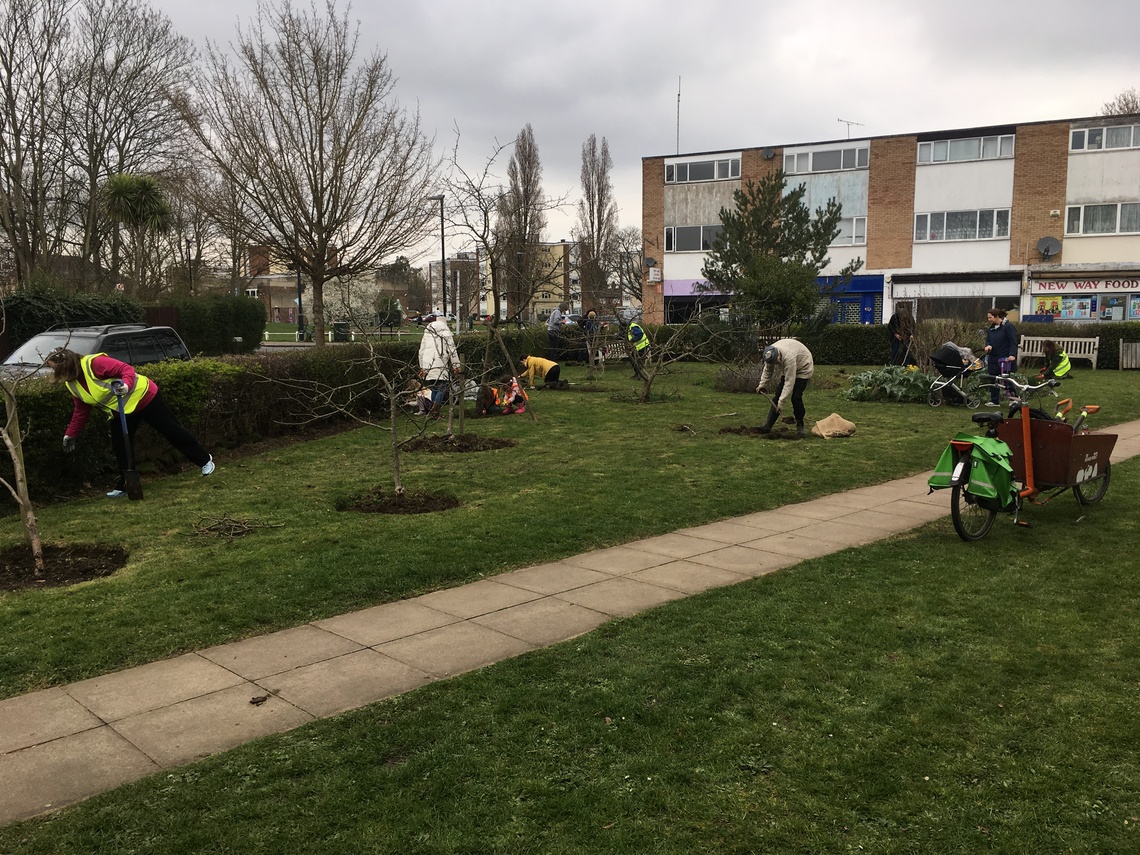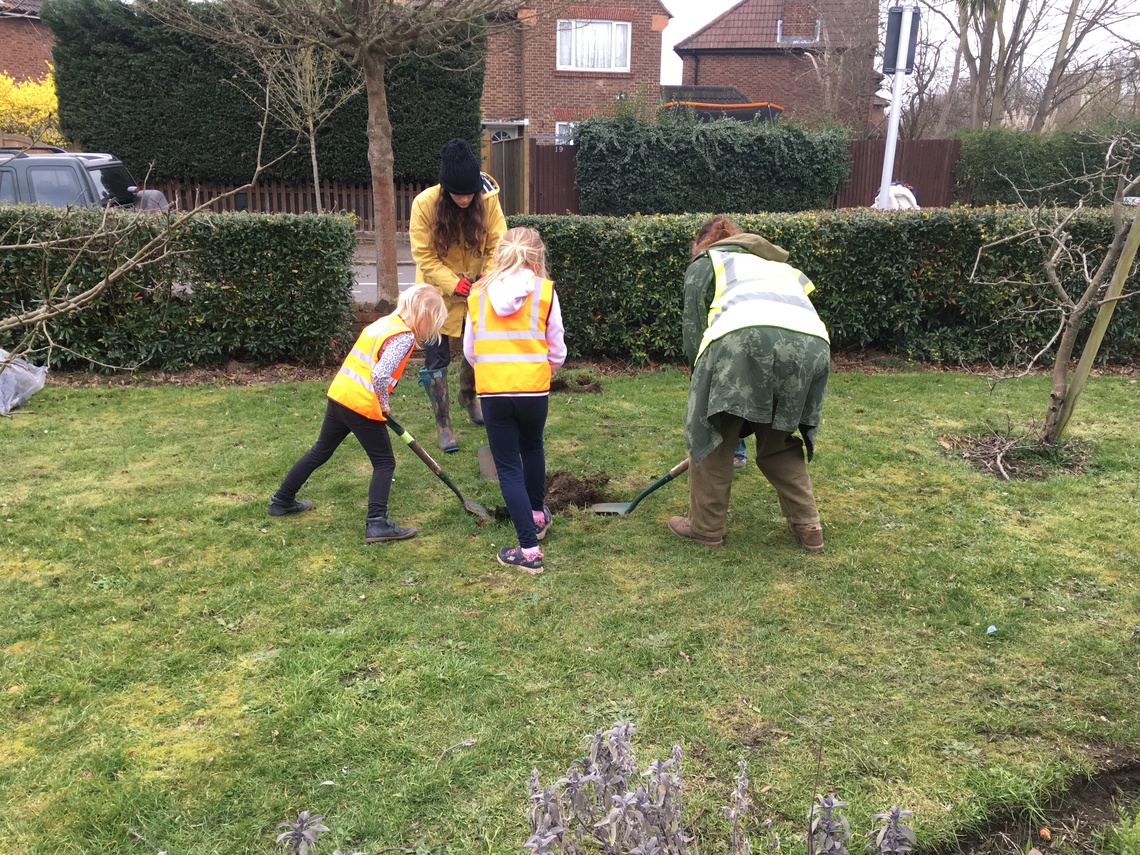Bird, Bee and Butterfly Garden at Ham Library
Habitat maintanance sessions
We run quarterly maintenance sessions open to anyone to keep Ham Library Garden the beautiful oasis it is for both people and wildlife. These sessions great fun, family friendly, and open to keen gardeners as well as complete newbies. Email us at info@hamunitedgroup.org.uk. if you would like to join our mailing list for this group. Alternatively, check our event calendar where we will post details on upcoming sessions.
About the garden
Designing a public space is a challenge: a multitude of people with different interests use them for different purposes, from socialising to contemplation. You need to consider soil conditions and microclimate. In your own garden you can coddle your plants, wrapping them up in winter and watering frequently in summer, and make up for the soil conditions with fertiliser and compost. Public spaces are managed by contractors under a tight budget, and plants need to mostly fend for themselves.
The plants - trees, shrubs, perennials, and climbers - have been selected to provide food and shelter for insects and birds for as much of the year as possible. They were also carefully chosen to thrive on the alkaline clay soil. In early spring, grape hyacinths, primroses, flowering currants and mahonia provide pollen as pollinators awake. The flower beds in full sun contain drought resistant perennials such as Bergenia, Euphorbia, Sedum, Stachys (lamb’s ear) and the wonderful statuesque globe artichoke. These are complemented by bulbs, such as Greater Knapweed, Lady's Bedstraw, Birdsfoot Trefoil, Meadow Crane's Bill and Harebell. Many of them have grey-green or silver leaves; these reflect the sun's rays, helping to conserve moisture within the plant tissue. A buddleja is a real butterfly magnet and provides shelter for birds. The bed also contains open flowered roses which are a lot more accessible to pollinators than closed flowered ones.
Alongside the building, the night scented honeysuckle attracts moths which in turn feeds birds and bats. In the back of the garden evergreen, shade tolerant shrubs such as the spiky Mahonia, Viburnum, Elaegnus x ebbingei and Prunus laurocerasus provide winter forage and nesting opportunities. When cutting back perennials and shrubs, we aim to leave as much as possible on site. The area behind the shrubs may be considered messy by some, but it is a valuable habitat for invertebrates. We collect leaves for mulch, and recently added a pile of logs and a tree stump in hopes to attract stag battles.
Some plants are not only good for wildlife and pleasant to look at. You can help yourself to fresh herbs, such as bay leaves, rosemary, sage and mint, either to use in the kitchen or as a cutting to grow your own plant. It’s easy and there are many tutorials online, so give it a go. In Victorian times, the library garden contained one of five orchards in Ham. As a nod to this, there is a mini orchard of apple trees, three of which are heritage variety and native to Surrey; we recently planted some additional very small apple trees, so called "step overs”, which were too small to plant within the orchard off Riverside Drive.
A new bench for the library
We successfully raised funds from the community for a new picnic table in the library garden. An ex-display model, it blends in well with the remaining furniture. Thank you to everyone who has made a donation.
Awards
The garden was judged to be ‘OUTSTANDING’ by London in Bloom in 2015 and again in 2016.
Click here to learn more about the garden's history.
For more information please email info@hamunitedgroup.org.uk



